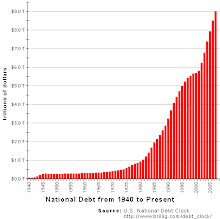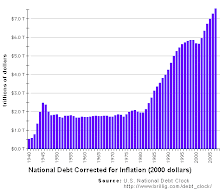August's jobs report is shining a little light on the ploddingly dreary labor market. Private employers added more jobs than economists expected last month, and the Labor Department revised the data to show bigger private sector gains for June and July. In July, private employers added 107,000 jobs, rather than the 71,000 initially reported. The unemployment rate last month ticked up to 9.6 percent from 9.5 percent in July, reflecting an increase in the size of the labor force.
This report offers some important lessons to help understand the current job market and how it's measured. Here are some things to keep in mind:
The headline number often doesn't mean much. The number of jobs lost or gained for the month will always be the first thing reported, but the truth is that it's often a very misleading figure. Let's look at August. Non-farm payroll employment fell by 54,000 jobs--that's the headline figure, and it's negative. More job losses are certainly the last thing anyone wishes to see at this point in the recovery. But if you look deeper, you'll see that the government cut 114,000 temporary census jobs last month. At the same time, total private sector employment increased by 67,000 jobs. Private-sector employment is the real barometer, not the sum of short-term government jobs.
Job numbers are just differences. Often, job data is reported in a way that can be confusing. Let's say a news report says "private sector employers added 67,000 jobs last month." That can sound a bit like all the private businesses in the country made just 67,000 hires altogether last month. In truth, American businesses hired millions of people last month. Consider that in June alone (the most recent month for which there is data) U.S. public and private employers made nearly 4.3 million hires. Retailers alone made 593,000 hires in June. The problem is that people lose or leave jobs in similar volumes. Economists call this "churn," and there's a lot of it--every month.
The long-term unemployed are missing out on the churn. Last month, there were 6.2 million people who had been out of work for six months or more. You might ask, given the millions of hires employers make each month, why some people have been unemployed for a year or two--or more: Wouldn't they eventually get caught up in the churn? This is one of the most troubling aspects of this recession. There could be several reasons. Many of the people struggling with long-term unemployment have found that their skills aren't matching up with what employers are looking for. Also, in general, the longer people are unemployed, the harder it is for them to find work, whether it's because they become stigmatized or because they are gradually become less aggressive job seekers. One possible policy response would be a tax credit for employers that hire a person who has been out of work for six or months or more.
A higher unemployment rate can actually be a good thing. Yes, this sounds ridiculous. Last month, the unemployment rate ticked up 0.1 percentage point to 9.6 percent. "It's worth noting that this was entirely attributable to a spike in the labor force--the household survey actually showed employment up 290,000 in August," Morgan Stanley economists Ted Wieseman and David Greenlaw said in morning note.
Consider an economy that's really in the dumps, with employers unwilling to hire. Hopeless job seekers run out of benefits and give up their job search instead relying on the income of a spouse or family member or another form of support. The people quitting their job search drive down the number of officially unemployed and shrink the labor force--and that can drive down the unemployment rate. Consider the opposite: Previously hopeless job seekers begin to see a better local job market, the headlines sound more promising, and their friends are beginning to find jobs, so they head back into the labor market. They pick up the phone and call a contact about an opening they spotted, or they fire off their resume online. They officially move back into the job market, but they aren't employed just yet--they're looking. This can drive the unemployment rate up, but it's a very positive thing for the economy that people are participating in the labor market again.
Back to August: "The labor force increased by 500,000 indicating that people are more encouraged about the labor market and decided to look for work boosting the jobless rate to 9.6 percent from 9.5 percent," says Sung Won Sohn, an economist at California State University-Channel Islands.
Slow growth will have Washington seeking stimulus. This may be a better-than-expected jobs report, but the job growth is still very small. The economy needs to be adding hundreds of thousands of jobs every month to absorb new people entering the job market and put the unemployed back to work. So lawmakers may be looking for more stimulus. "There is a good chance that the Obama Administration will introduce a set of targeted economic stimulus programs," Sohn says. "Payroll tax relief to encourage new hiring for small businesses is a good possibility. State and local governments are laying off employees as revenue falls. Some assistance from Washington could stem job losses here." Shortly after the release of the August jobs report Friday, President Obama encouraged lawmakers to pass a $55 billion bill that would provide additional loans to small businesses. Housing stimulus may also be coming--along with more unemployment benefit extensions, Sohn says.
Friday, September 3, 2010
How to Read the Current Job Market
The unemployment rate increased to 9.6% in August 2010, but that may be a good indicator for job prospects in the near future if you understand how the statistic is calculated. .In the September 3, 2010 U.S. News & World Report article "5 Key Lessons in August's Jobs Report," Liz Wolgemuth provides some insight into why an increase in the unemployment rate might be a good signal for economic recovery.
Subscribe to:
Post Comments (Atom)






I cannot get excited about the current job stats.
ReplyDelete